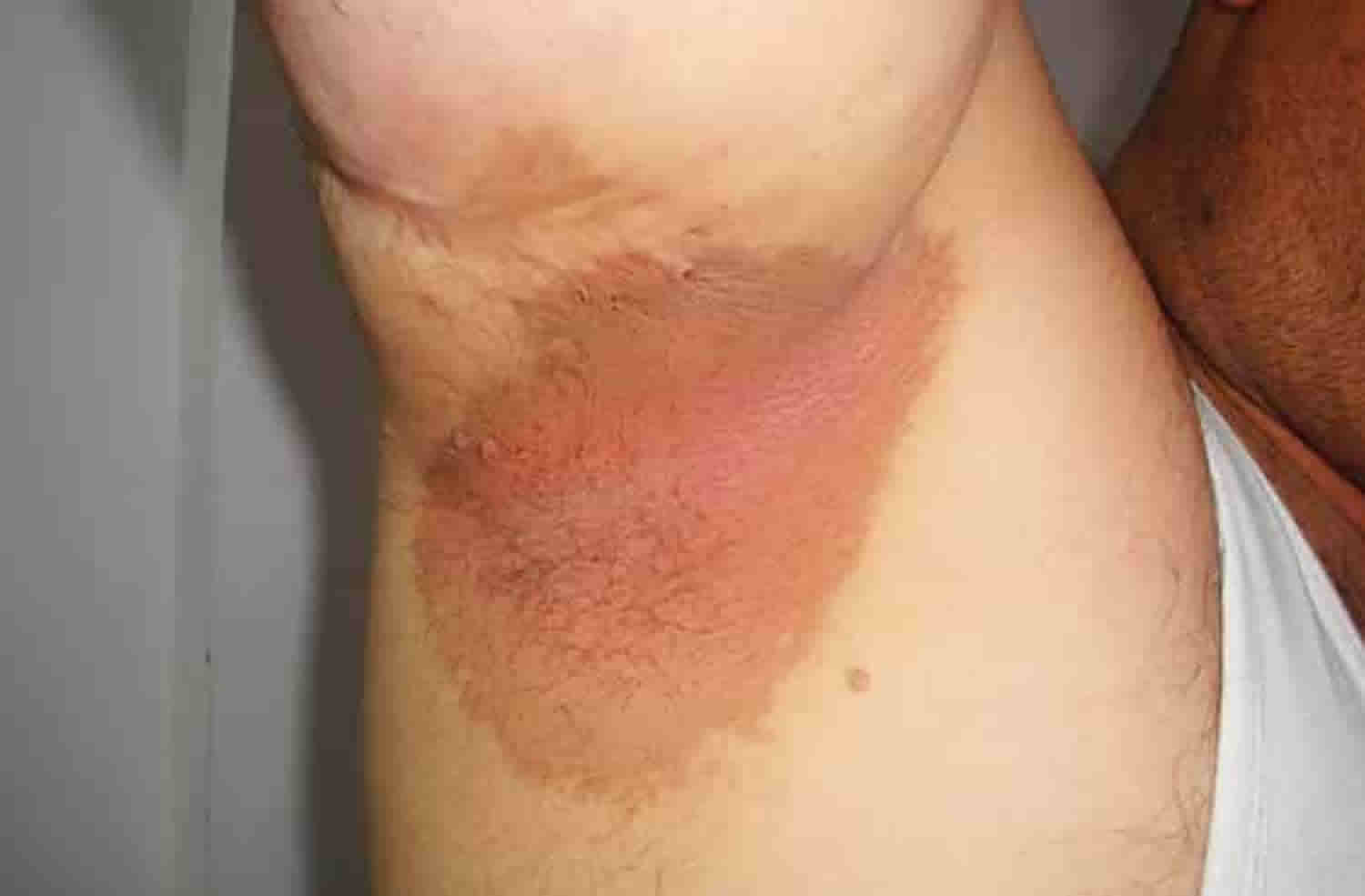
Erythrasma is a common skin condition affecting the skin folds under the arms, in the groin and between the toes.
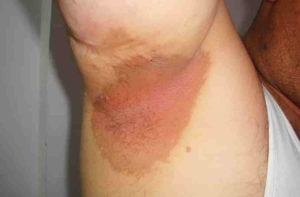
It is reported to be more prevalent in the following circumstances:
- Warm climate
- Excessive sweating
- Diabetes
- Obesity
- Poor hygiene
- Advanced age and other immunocompromised
The bacteria responsible for erythrasma are bacilli called Corynebacterium minutissimum.
CLINICAL FEATURES
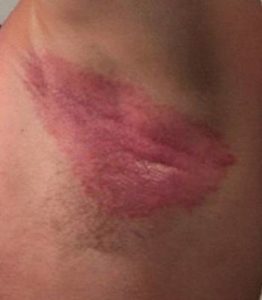
Erythrasma presents as well-defined pink or brown patches with fine scaling and superficial fissures. Mild itching may be present.
The common sites for erythrasma are armpits, groin and between the toes. The intergluteal fold, submammary, and periumbilical skin may also be affected. Widespread infections are most often associated with diabetes mellitus.
DIAGNOSIS
Erythrasma has a typical clinical appearance. Diagnosis may be supported by the following investigations.
- Wood lamp skin examination: long wavelength ultraviolet radiation causes erythrasma to fluoresce a coral-pink colour due to coproporphyrin III released by the bacteria. The fluorescence is not seen if the skin has recently been washed because the responsible porphyrin is water soluble.
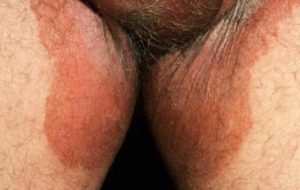
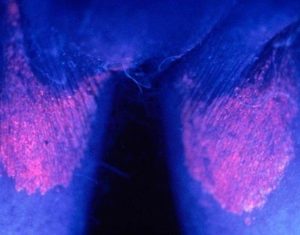
- Swab or skin scrapings for the Gram stain or the culture.